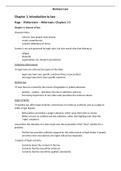Resume
Summary Business law - Business and the law
- Cours
- Business Law
- Établissement
- Vrije Universiteit Brussel (VUB)
Everything from the first part of the semester, which is 'business and the law' is covered in this summary. It covers all the documents the prof uploaded on Canvas and her lectures. It covers the origin of law, different forms of laws, etc...
[Montrer plus]












